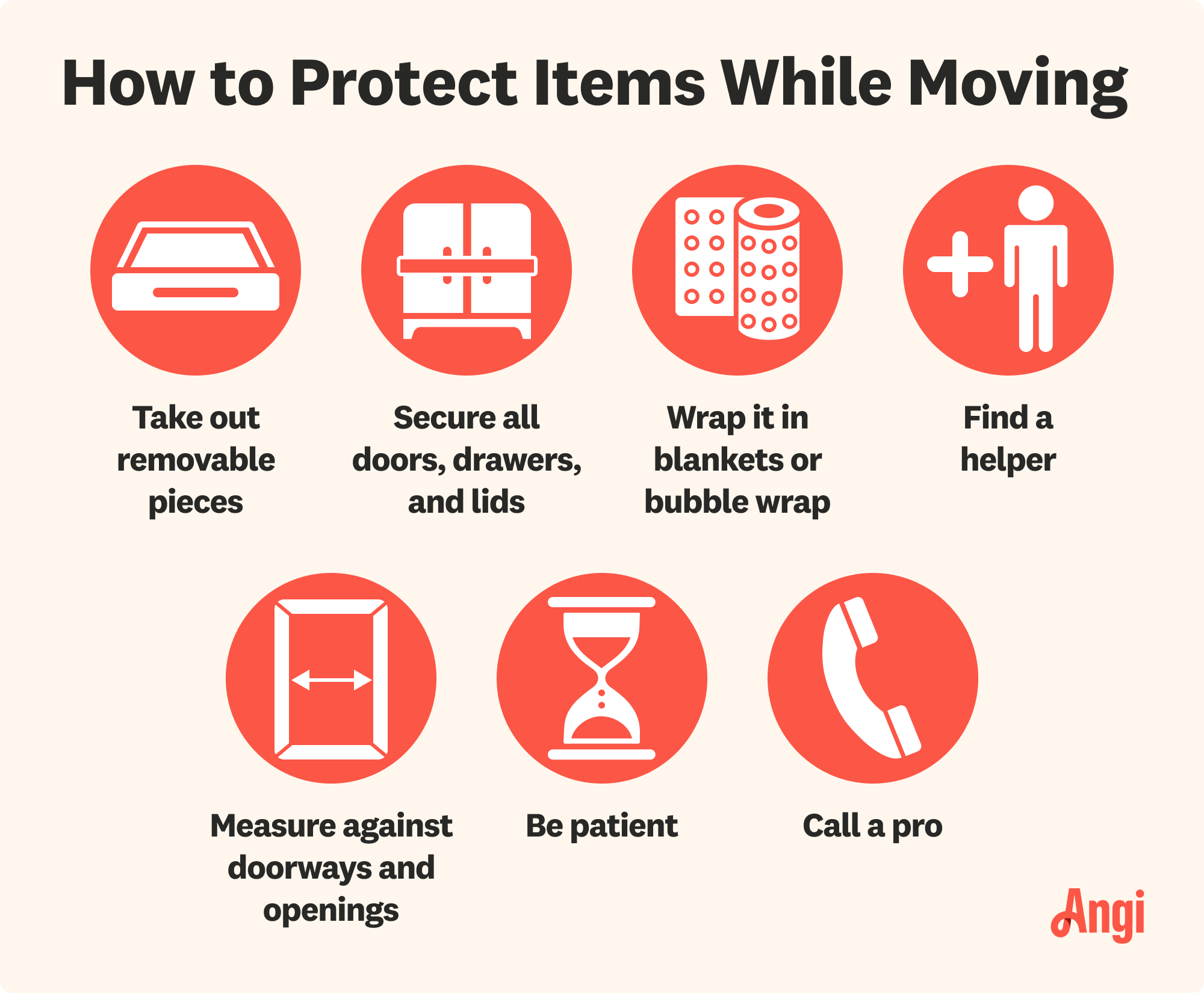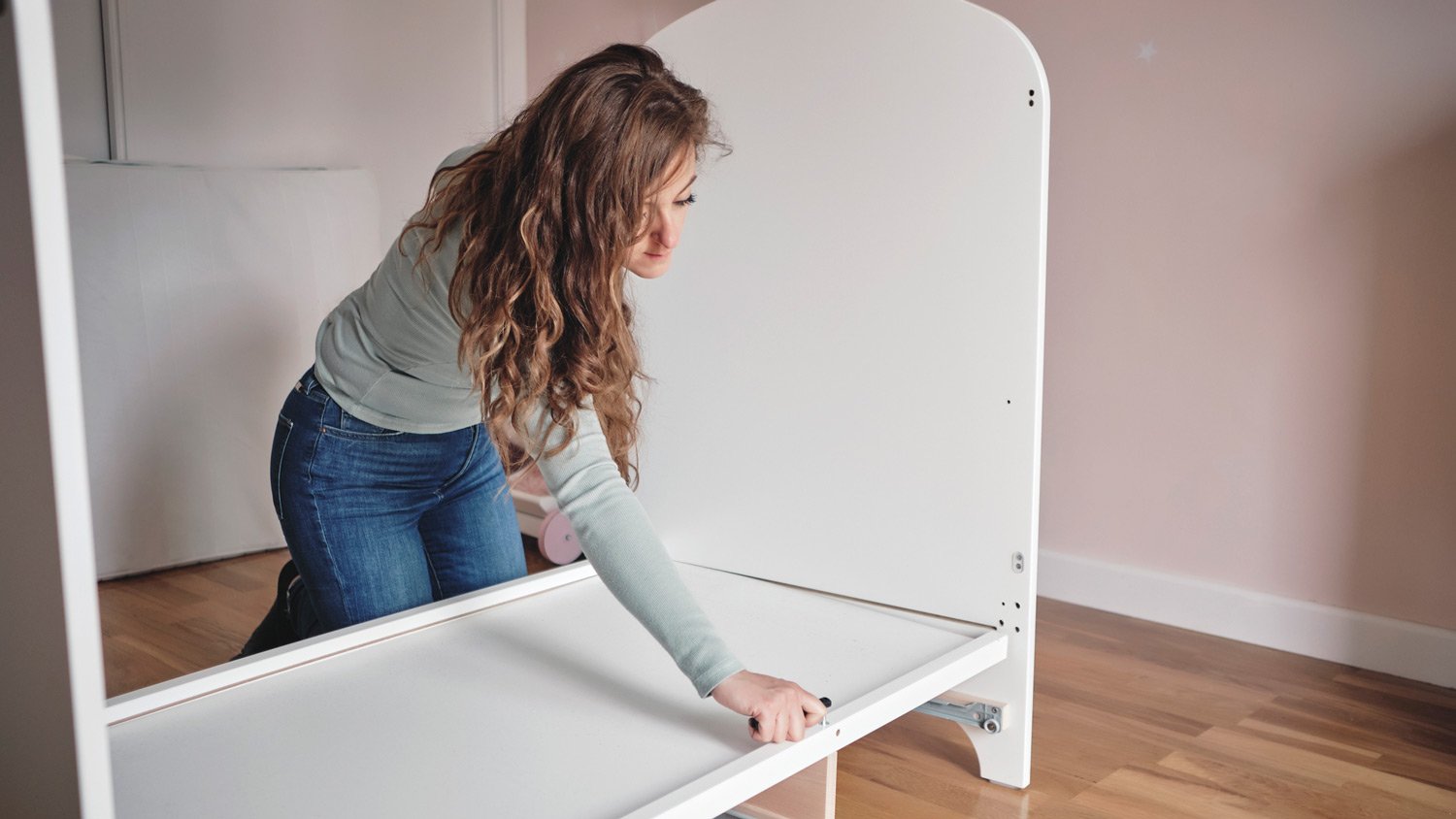How to Wrap Furniture for Moving: 9 Tips and Tricks
Keep your furniture wrapped tight during your big move


So, a move is in your future. Have you thought about how to wrap furniture for moving to protect pieces like your couch or favorite armchair?
Wrapping and packing supplies are some of the hidden fees associated with moving, but you can spend wisely once you learn the best way to wrap your pieces. Of course, if you hire a local moving company, they’ll have wrapping supplies on hand. But if you DIY, follow these tips to help you wrap your furniture like a pro.
It's important to move heavy furniture safely to avoid personal injury or property damage. The safest option is to hire professional movers with the right tools, equipment, and experience to move heavy furniture efficiently.
1. Collect Wrapping and Packing Supplies

Your furniture’s safe delivery depends on the wrapping and packing materials, so it’s important to choose the right supplies. You’ll need these popular options to safeguard your furniture while it's in the moving truck or shipping crate.
Bubble wrap
Stretchable plastic wrap
Moving blankets
Sofa and mattress covers
Corrugated cardboard sheets
Sealable plastic bags
Packing tape
2. Photograph Your Furniture Before Wrapping
If you’ve hired a top-rated moving company to transport your household goods, they’ll likely keep an inventory list to document the condition of your items. Before the movers arrive, take photos and videos of your furniture so you have a record of its condition before loading. If you’re tackling a DIY move, the pictures and videos will help you with furniture placement and reassembly in your new home.
3. Clean the Furniture’s Surfaces
A new home is an exciting change and a chance to start fresh. Wrapping your furniture guarantees clean and tidy items when you unwrap them later. To avoid damaging the finish, follow these cleaning tasks before wrapping.
Clean food residue from furniture
Use a mild furniture soap on wood surfaces
Wipe glass clean
Spot clean furniture upholstery fabric if needed
Dust cracks and crevices
4. Dismantle Your Furniture When Possible

It's easier to wrap, box, and load furniture that breaks down into smaller pieces. Disassemble as many items as you can to save your door frames and walls from dents and nicks. Use sealable plastic bags to keep the small parts together. Then, tape the bags to the underside or backs of the furniture to ensure it doesn’t get lost.
Remove knobs, casters, and other hardware
Unscrew doors with glass to wrap separately
Disconnect legs from tables and sofas
Disassemble beds
5. Use Multiple Materials to Protect Your Furniture
Professional moving companies and DIY movers alike use a combination of stretchable plastic wrap, moving blankets, bubble wrap, and cardboard to protect furniture. Determining which combination works best for you depends on the amount, size, and type of furniture you have. Don’t be shy about mixing and matching your packing materials to get the perfect fit.
6. Use Stretchable Plastic Wrap to Protect Fabric
Stretchable plastic wrap is a must-have tool for your move. It clings to furniture and itself to protect your furniture. Thanks to its rubber band-like features, it also keeps drawers and doors shut during the move. You’ll need an extra set of hands to help you wrap the furniture because the roll is large. Stretchable plastic wrap should be used to wrap the following:
Secures doors, drawers, and panels, if unremovable
Protects fabric pieces from tears and scratches
Bundles smaller pieces of furniture together
Shields sofa and mattress covers
7. Moving Blankets Offer Extra Protection
Moving blankets aren’t your average cuddly, warm bed covers. Instead, they're thick and engineered to protect your furniture from bumps and scuffs during transportation. You can use one or two blankets per furniture item, depending on its size and shape.
First, drape the moving blanket over your items, and then tuck the blanket to create “corners” whenever possible. Secure the blankets with packing tape and stretchable plastic wrap. You can use moving blankets for most furniture items, but they’re handy for covering exposed areas of furniture, like the backsides, and protecting doorways.
8. Use Plastic Bubble Wrap for Select Items
Everyone loves the quick snap-pop of bubble wrap, and its protective qualities for fragile items are hard to beat. Bubble wrap works great for most items, but be careful if your furniture has a delicate finish, like faux paint or antique glass, because the plastic could stick to it.
It's a good idea to layer the furniture with packing paper first before wrapping with bubble wrap. Only use anti-static bubble wrap for your electronics to avoid damage. These furniture items benefit from bubble wrap:
Wooden furniture legs, if not removable
Glass tabletops and furniture
Unremovable glass furniture inserts, like shelving or door panels
Mirrors
Ornamental pieces on furniture, like carvings
9. Cardboard Acts as a Shock-Absorbing Layer
Corrugated cardboard is an all-purpose moving tool that’s perfect in a pinch. It adds a shock-absorbing layer in between items. Here’s how to add cardboard into your wrapping strategy:
Additional coverage for unprotected areas of furniture
Sandwich glass and mirrors between two sheets
Create corner protectors for wooden and glass furniture
An extra layer of protection between furniture in the moving truck
As a make-shift furniture dolly to move furniture across the floor
How Much Does It Cost to Hire Movers?
The average cost to hire movers for an entire house is between $880 and $2,570. It’s much cheaper if you’re only moving furniture, with an average cost between $70 and $600. The exact amount depends on several factors, including distance, the number of items, and add-on services like moving insurance and furniture disassembly. Long-distance moves are significantly more expensive, ranging from $2,700 to $10,000.
Moving Furniture Yourself vs. Hiring a Pro
Moving furniture yourself is cheaper than hiring a local moving company, but the DIY route isn’t an option for everyone, and hiring professionals has several benefits. They’ll get the job done quickly and safely, and their experience reduces the risk of furniture getting damaged. You can also purchase insurance to recoup the value of your furniture should any accidents occur. Additionally, hiring movers protects people from injuring themselves, especially if they don’t have proper technique.
Frequently Asked Questions
To safeguard your furniture and upholstered items, it's best to use plastic wrap or specially-made plastic sofa covers. However, you should avoid wrapping wooden furniture in plastic if you plan on storing it, as plastic can trap moisture and warp the wood, plus it may damage certain finishes. In either case, old blankets or moving blankets make excellent alternatives. For protecting delicate glass table tops and mirrors, bubble wrap is always a reliable choice.
Movers wrap furniture in plastic to provide protection during transportation or storage. Plastic wrap acts as a barrier, safeguarding furniture from dust, dirt, moisture, and potential scratches or damage. It helps to keep upholstery, wood, or delicate surfaces intact, preventing wear and tear during the moving process. Additionally, plastic wrap helps to secure loose components of furniture, such as drawers or doors, reducing the risk of breakage.
Yes, in most cases it’s a good idea to wrap furniture in plastic to protect it from dirt, dust, and damage during storage. However, natural and porous materials such as wood or leather should have breathable fabric covers to prevent moisture damage from condensation. Either way, it’s always important to ensure proper ventilation to prevent moisture buildup, especially in humid climates.
Paper moving pads, also called furniture wrapping paper or paper moving blankets, are sheets of recycled paper used to protect various items during moving. Similar to traditional moving blankets, paper pads are also reusable, making them a sustainable and cost-effective option for protecting your belongings during the moving process. Although they’re recycled, they still provide excellent protection against dust, dirt, and scratches.





- How to Move Heavy Furniture: 7 Tips to Keep You Safe
- How to Move By Yourself: 10 Top Tips
- 8 Hidden Moving Costs and How to Handle Them
- 11 Tips for Furnishing Your Patio to Make It Fresh, Fun, and Inviting
- 45-Point Moving Cross-Country Checklist
- Need Help Moving Furniture in Your Home? Hire Movers
- 20 Moving Tips to Help You Prepare for Moving Day
- The Ultimate Moving Out Checklist: 8 Week Countdown
- The Complete Moving Supplies List You Didn’t Know You Needed
- How to Pack a Pod: 8 Tips to Try
















